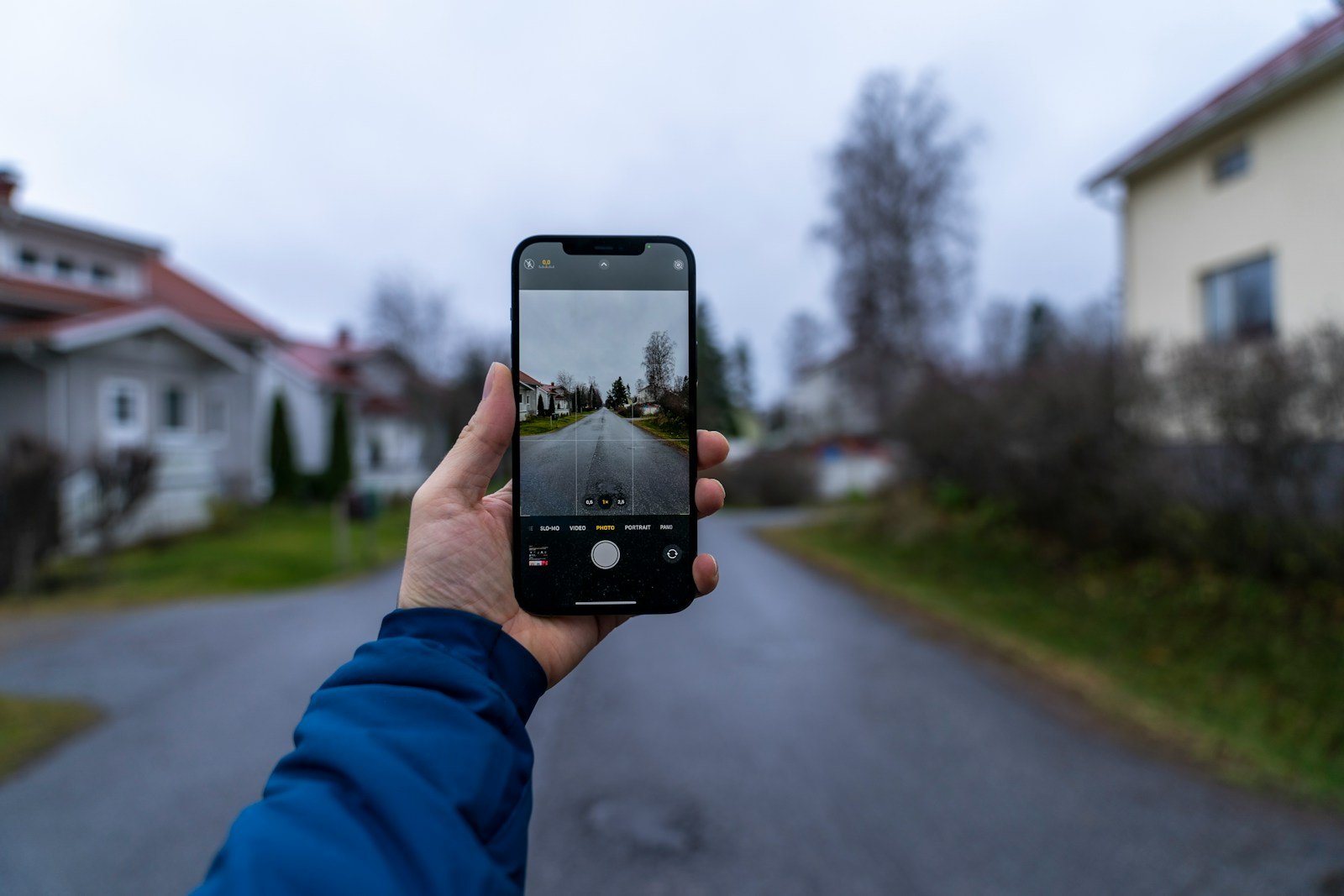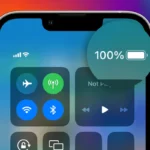Experiencing a shaking camera on an iPhone can be troubling for users. This anomaly disrupts photo clarity and video stability. The causes can be as simple as unsteady hands or as technical as a software glitch. Key components in the device, such as the camera’s autofocus mechanism, may also be at fault. Users often find this issue comes about with no clear warning, turning a reliable gadget into a source of frustration.
Addressing iPhone camera shaking involves a series of steps which include both hardware and software checks. Users can start by cleaning the lens with a microfiber cloth to remove any obstructions. A system restart can clear out soft errors that might cause the camera to malfunction. If simple solutions do not resolve the issue, deeper troubleshooting or professional help might be required, indicating potential hardware issues.
Understanding the Problem
iPhone camera shaking typically manifests as:
- Visible vibrations or trembling in the camera preview
- Blurry or unfocused photos
- Shaky video recordings
- Difficulty focusing on subjects
- Continuous movement even when the phone is held steady
Common Causes of iPhone Camera Shaking
1. Physical Movement
If your hands are unsteady while holding your iPhone or if you’re experiencing hand tremors, this could result in a shaky camera effect (source: Know Your Mobile).
2. iOS Update Issues
While Apple is constantly working on fixing bugs, improving features, and adding new capabilities via software updates, sometimes an iOS update can cause camera issues (source: iPhone Life).
3. Malfunctioning Image Stabilization
The shaking of your iPhone camera can be attributed to a malfunctioning image stabilization system, which is designed to minimize the effects of hand movement or unstable conditions while taking photos or recording videos (source: Blinks and Buttons).
4. Camera App Issues
Sometimes, certain camera apps may have software bugs or compatibility issues that lead to a shaking camera experience (source: Know Your Mobile).
5. Hardware Problems
Although rare, hardware issues such as a faulty camera module or damaged internal components can cause persistent shaking (source: Know Your Mobile).
8 Proven Solutions to Fix iPhone Camera Shaking
1. Restart Your iPhone
The simplest solution is often the most effective:
- Press and hold the power button and volume button simultaneously
- Slide to power off
- Wait 30 seconds, then turn your iPhone back on
- Test the camera to see if the shaking has stopped
2. Force Close and Restart the Camera App
- Swipe up from the bottom of the screen (or double-tap home button on older models)
- Find the Camera app in the app switcher
- Swipe up on the Camera app to close it
- Reopen the Camera app from your home screen
3. Check for iOS Updates
- Go to Settings > General > Software Update
- If an update is available, download and install it
- Many camera issues are resolved through iOS updates
4. Reset Camera Settings
- Navigate to Settings > General > Transfer or Reset iPhone > Reset
- Select “Reset All Settings”
- This won’t delete your data but will reset all system settings to defaults
5. Remove Your Phone Case
Some phone cases, especially magnetic ones or cases with metal components, can interfere with the camera’s stabilization system:
- Remove your case completely
- Test the camera without the case
- If the shaking stops, consider switching to a different case
6. Clean the Camera Lens
- Use a soft, lint-free cloth to gently clean the camera lens
- Remove any dirt, fingerprints, or debris
- Ensure the lens area is completely dry
7. Disable Camera Features Temporarily
- Turn off features like Live Photos, Portrait mode, or video stabilization
- Test if the shaking persists with basic photo mode
- This can help identify if specific features are causing the issue
8. Contact Apple Support
If none of the above solutions work, you may have a hardware problem that requires professional repair. Hardware issues, while rare, can include:
- Faulty optical image stabilization (OIS) system
- Damaged camera module
- Internal component failure
Prevention Tips
- Handle with care: Avoid dropping your iPhone or subjecting it to impacts
- Use a quality case: Choose cases specifically designed for your iPhone model
- Keep software updated: Install iOS updates promptly to avoid known bugs
- Avoid extreme temperatures: Don’t expose your iPhone to excessive heat or cold
- Regular cleaning: Keep the camera lens clean and free from debris
When to Seek Professional Help
Consider professional repair if:
- The shaking persists after trying all software solutions
- The issue started after a drop or impact
- Multiple camera functions are affected
- The problem occurs across all camera apps
Conclusion
iPhone camera shaking is a common issue that can usually be resolved through software troubleshooting (source: iMobie). Start with the simplest solutions like restarting your device and force-closing the camera app before moving to more comprehensive fixes like resetting settings or checking for hardware issues.
Key Takeaways
- The iPhone camera shake is a noticeable problem that affects photo and video quality.
- Initial fixes include lens cleaning and restarting the device.
- Professional assessment may be needed if basic troubleshooting fails.
Understanding iPhone Camera Shaking Issues
When addressing iPhone camera shake, we consider both hardware and software influences that disrupt image stability. This section explains the common causes and how they affect photo and video quality.
Common Causes of Camera Shake
The iPhone camera may shake due to a variety of reasons tied to the actual hardware or the software managing it. A few hardware issues consist of problems with the optical image stabilization (OIS) system or the gyroscope which are designed to keep images steady. Debris or dirt on the lenses can also contribute to this problem. On the software side, glitches can interfere with the camera’s ability to adjust for movement. This malfunction might appear suddenly after a system update or due to an app conflict.
Impact on Photo and Video Quality
Camera shaking during photo capture results in blurry photos. The clarity of those memorable moments suffers. Videos recorded while the camera shakes lack stability, making the footage seem amateur and sometimes causing viewer discomfort. Maintaining image quality requires both the hardware and software to function correctly to counter any unwanted motion.
Troubleshooting and Fixes for iPhone Camera Shake
The iPhone camera shake issue can be troubling. This guide provides clear solutions to remedy the problem.
Software-Based Solutions
Check for iOS updates: Outdated software may cause camera malfunctions. To update iOS, go to Settings, tap General, and then select Software Update. Install any available updates to improve camera stability.
Restart the Camera app: If the camera starts shaking, exit the app. Swipe it away from recent apps to close it completely. Then, relaunch the app to see if the shaking persists.
Reset all settings: Sometimes incorrect settings can lead to camera shake. To reset settings, navigate to Settings, tap General, then Reset, and choose Reset All Settings. This will not erase your content but can fix camera issues.
Hardware-Related Repairs
Remove phone case and lens protector: These accessories might interfere with the camera’s performance. Take them off to eliminate any external factors causing the shake.
Check for hardware issues: If software fixes don’t work, a hardware malfunction might be the culprit. The Optical Image Stabilization (OIS) motor or the camera module may be damaged. If you notice the issue persists, contact Apple Support or visit a technician for a potential iSight camera replacement.
Hardware interference: Sometimes other phone components can disturb camera function. If you are experienced with iPhones and their components, ensure there’s no interference from surrounding parts that might affect the camera. If not, seek help from professionals.
The steps provided here are straightforward and aim to address the iPhone camera shaking issue effectively. If the problem continues after these solutions, professional help may be the next necessary step.







